Table of Contents
QUICK SUMMARY:
Understanding your marketing agency structure is key in shaping operational hierarchies. Various structures, including pod and traditional models, suit different agency sizes, services, and goals. This article digs into considerations for creating or adjusting an agency's organizational chart, exploring whether to separate account management from execution, guided by insights from experienced agency owners.
Whether you're commanding a 100-strong workforce or looking to break through your agency’s next growth plateau, looking at your agency’s organizational structure can be the linchpin of your success.
Organizational structure matters: the way you organize your teams directly influences your agency's profitability, efficiency, culture, and scalability. But how do you decide which structure best fits, or whether you need a serious organizational restructuring?
In this article, we invite you to take a close look at your existing marketing agency structure as we dive into the heart of this question, drawing on the insights of seasoned leaders to explore the pros and cons of popular organizational structures and hierarchies.
Let’s take a look at the ins and outs of organizational structures for marketing agencies!
The Most Common Organizational Structures for Marketing Agencies
There are several ways to structure a marketing agency, and the best choice often depends on factors such as your size, services, and overall business goals. For instance, an SEO agency might opt for a pod agency organizational structure with only three different divisions, whereas a full-service marketing agency with multiple departments might require a more structured traditional model.
Let’s begin with a brief overview of the five different functional structures we will explore in this article.
Functional Structures | Description | Key Takeaways |
|---|---|---|
Traditional | A hierarchical organizational structure with clearly defined roles and responsibilities. Includes various levels of management and teams divided by function. | Common in larger marketing agencies offering a wide variety of services. |
Pod | Small, cross-functional teams (or "pods") work on specific client accounts or projects. Each pod operates somewhat independently. | Often used by smaller marketing agencies or those with a collaborative culture. Allows for greater specialization and focus on individual clients. |
Matrix | Combines elements of the traditional and pod organizational structures. Employees may be part of a functional marketing team structure but also work on cross-functional teams or projects. | Offers more flexibility and collaboration but can be complex to manage. |
Flat | Few or no levels of middle management. All employees are given a high degree of autonomy and responsibility. | Fosters a culture of equality and innovation but may also lead to confusion or lack of accountability if not managed well. |
Freelance/Collective | The agency is made up of freelancers or independent contractors who are brought together for specific projects. | Allows for a high degree of flexibility and scalability, as the agency can easily bring in new skills and expertise as needed. |
Naturally, each of these structures has its own advantages and challenges. Many marketing agencies use a combination of organizational structures or adapt their structure over time based on their needs and circumstances. Where does your agency’s org chart fit in?
Let’s dive deeper into each type of organizational structure.
1. The Traditional Model
With this model, hierarchy is the name of the game. The traditional structure takes a page out of the book on organization science: it’s the go to structure for larger teams who offer a wide variety of services and has been the backbone of many organizations for decades, not just in the marketing industry, but across various sectors. (Mad Men is a good example of this type of organization, with traditional account managers, and a clear chain of command).
In this marketing agency structure, the siloed account management and project management teams assign execution to the next person responsible.
As you can see in the graphic below, the traditional model is characterized by:
Clear roles and responsibilities,
A top-down management approach, and
Distinct marketing department divisions.

In a traditional agency structure, you'll typically find a CEO or president at the top of the hierarchy. Below them, there may be various levels of management, such as Vice Presidents (VPs) and directors, each overseeing specific departments. These other departments are often divided based on function, such as account services, creative, strategy, and media.
Each marketing department is typically led by a department head or manager, and within each department, there may be further divisions or teams, each with its own team leaders.
Reasons to Go the Traditional Route
Here’s a breakdown of the key benefits of a traditional structure.
Crystal Clear Roles & Responsibilities
In a traditional marketing agency structure, there is a clearly defined organizational structure. Everyone knows their role and who they report to, which reduces confusion and ensures that work is completed efficiently. This is especially useful for large agencies, as each team is broken up by function and typically led by a department head.
A hierarchical structure with clearly defined roles and a chain of command works great when you have a large team.
Jonathan Gorham, Founder of Engine Scout
This model is especially well suited to larger teams who typically serve clients' individual offerings requiring little cross-team collaboration.
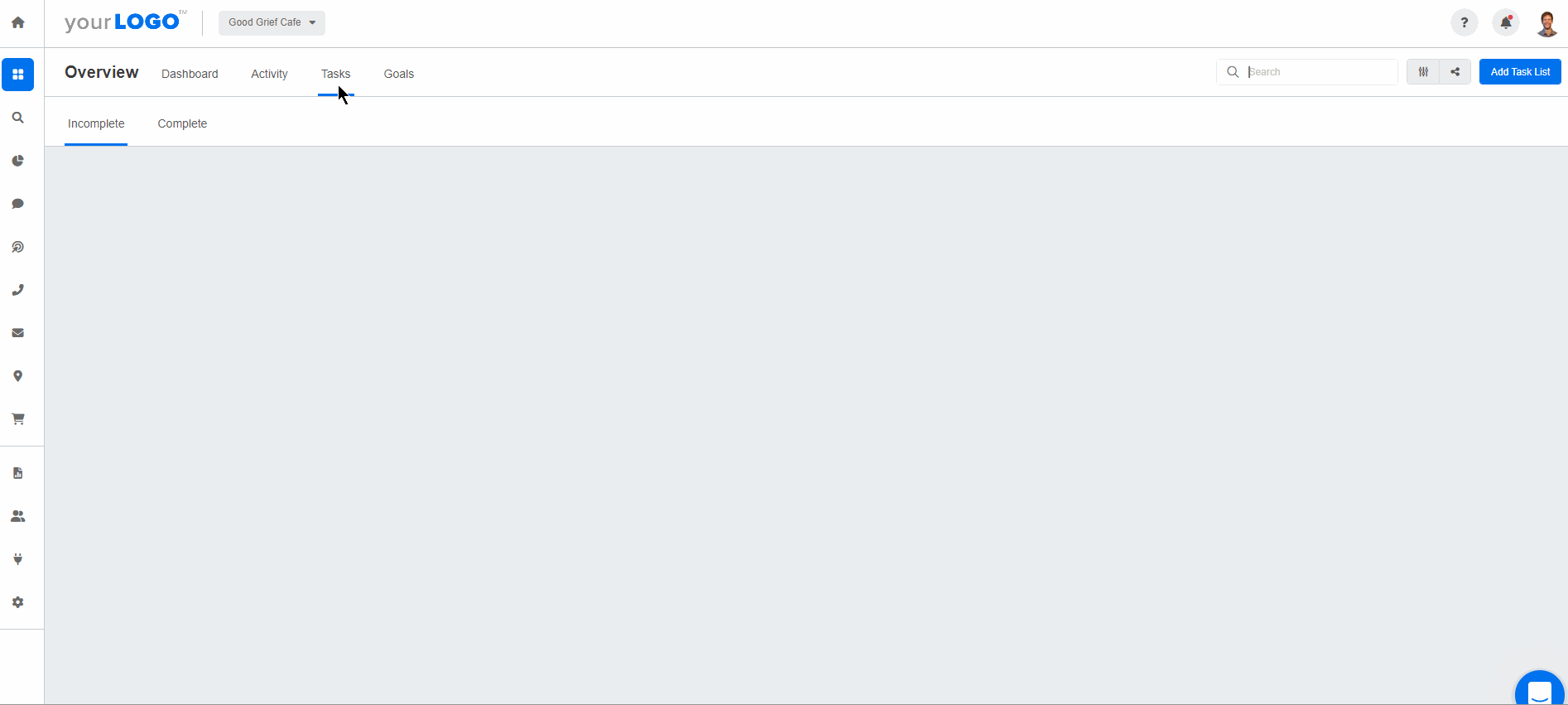
Give your team leads the tools to know who's working on what by assigning tasks and keeping track of progress in one place. Try AgencyAnalytics free for 14 days.
Smaller teams may also benefit from this type of agency structure, as it outlines individual roles and ensures everyone knows what they’re working on.
The current agency is split up into two disciplines: Web Development and Digital Marketing. There is a fluid collaboration between the two disciplines for production staff, however, on the development side, account management is not tied to any production staff.
Bryan Coles, Client and Strategy Development, KD
Designed to Handle Long-Term Growth
The traditional structure does a good job of handling significant growth and scalability. Think about it–an organizational structure that is clearly defined has an infrastructure that makes it much easier to fill in new departments or roles when required. As the agency expands, new departments or roles can be added to the existing structure.
Let’s say you’ve recently decided to onboard an SEO specialist to your team. This new employee fits seamlessly into your existing digital marketing team that already has a department head and specialists. In the long run, it’s also much easier to add new specialists or other resources that fall under this purview.
Offers Opportunities for Career Progression
The traditional organizational structure allows individuals to specialize in a specific area of the agency's work, which leads to high levels of expertise and quality of work.
Even if someone is in the paid marketing department, they have to shadow people in search engine optimization, creative, web dev, and all of our departments to get an understanding of how they all work together for our clients.
Stephen Christopher, Founder of Wit Digital
Ensures Consistent Performance & Stability
This type of marketing agency structure is helpful to ensure that everyone knows what they’re working on and is held accountable for their output. It’s tried and tested and provides a stable framework for the agency's operations.
We have an account management team that takes over the relationship and handles all client communication. Internally, we have a project management team that quarterbacks all campaigns to ensure that the right specialists–think designers, developers, producers, media planners, and more–are involved and that the work is completed on time and to scope.
Chris Weatherly, Director of Sales & Operations for WRAL Digital Solutions
With a clear chain of command, it's easy to hold individuals and marketing teams accountable for their work. This helps ensure high standards and consistent performance.
The Downside of a Traditional Approach
The traditional organizational structure is not without its challenges. It can lead to silos, with departments focusing on their own goals rather than the agency's overall objectives. It can also be less flexible and slower to adapt to change than a more modern, agile structure. However, hierarchy issues can be found everywhere there are social structures.
Therefore, it's important for agencies to use this organizational structure to encourage communication and collaboration across departments and to be open to change and innovation.
2. The Pod System
The pod model is a very client-centric approach to marketing team organization and can take many forms. Also known as the team-based or agile model, the pod system is a modern approach to agency organization that focuses on creating small, cross-functional marketing teams, or "pods".
Each pod is essentially a mini-agency within the larger agency, equipped with all the necessary skills and resources to manage a specific client account or project.
In a pod structure, each marketing team typically consists of a variety of roles, such as an account manager, strategist, designer, content marketing specialist, and copywriter. Plug and play this example of a pod structure with different marketing teams.
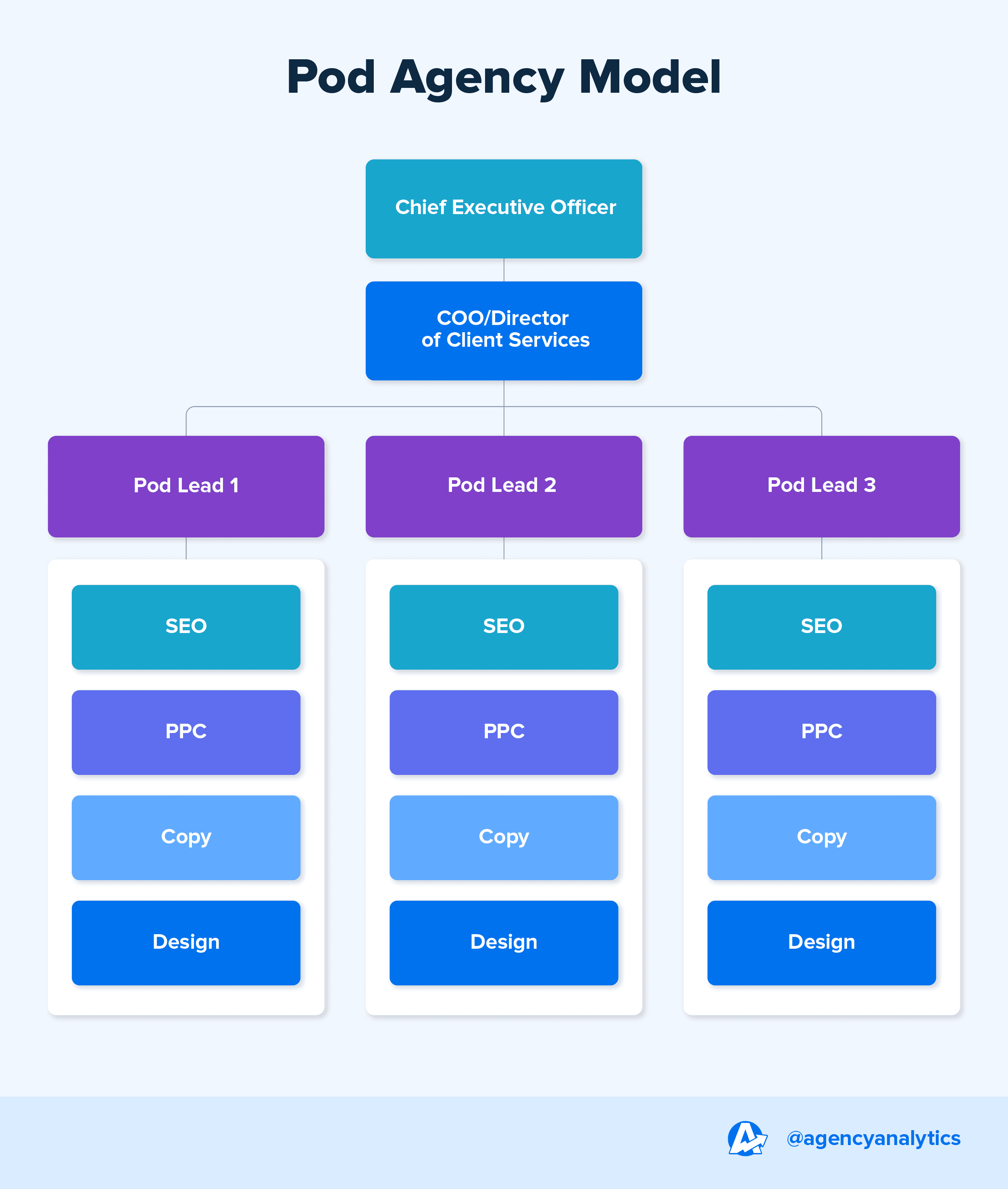
The exact composition of a pod can vary depending on the needs of the client or project they're working on. The key is that each pod operates somewhat independently from the rest of the agency, with a high degree of autonomy and responsibility.
Essentially, the idea behind this model is that team members work closely with a client account and develop specific product expertise while collaborating with fellow pod members in a rich, multidisciplinary environment.
Reasons to Use the Pod Model
Here’s a breakdown of the key benefits of a pod structure.
Allows Marketing Team Members to Become Experts on Their Client
Working in a pod provides employees with a wider range of experiences and learning opportunities, as they get to work on all aspects of a client's work. This would lend itself better to larger agencies that have multiple clients across a variety of industries, rather than small agencies whose team members tend to touch all the accounts.
We have 2-3 person media teams working on a small set of clients and managing their entire digital media budget across all channels. We keep our client portfolios limited to only a handful of accounts per team to ensure that our team members can go deep and become experts within each digital channel.
Natalia Wulfe, Co-Owner & CMO of Effective Spend
Team Collaboration Facilitates Job Satisfaction & Problem-Solving
The collaborative nature of the pod organizational structure also leads to increased job satisfaction and is great for retaining top talent. When Stephen Christopher, Founder of Wit Digital, hires his employees, their onboarding includes training on marketing terms as well as client industry terms as they relate to their niche. New employees also shadow a team lead in each marketing department, even if they weren't hired for that specific role.
There are benefits from this collaborative social structure: a cross-functional environment leads to a deeper understanding and appreciation of each other's roles and contributions.
For example, a copywriter might gain a better understanding of design constraints, while a designer might learn more about the nuances of brand voice from the copywriter. This mutual understanding results in more integrated and cohesive work. Engaging in close-knit and cross-functional collaboration allows for a more holistic approach to problem-solving and creativity, as ideas are bounced around, built upon, and refined by the team.
Streamlines Ops
The pod model streamlines many processes by reducing friction. All members of the team are working on the same projects, day in, and day out. By minimizing gatekeeping or bottlenecks from senior leadership, pods create greater efficiency of output while increasing accountability within the team.
With all the necessary skills and assets in one specialized team, decision-making, and execution is faster and more efficient.
Putting Clients First Improves Retention
The Pod structure is designed with a strong emphasis on client focus. In this model, each pod is dedicated to a specific client or project, enabling the team to provide a high level of attention and service to that client.
Rather than being passed between different departments, the client has a dedicated team who knows the account inside and out. This leads to more consistent, efficient, responsive communication and service as the client builds a relationship with a stable team committed to achieving their unique goals.
[The pod] structure ensures that the client is getting a service that is working toward their best interests. A siloed media team leads to in-fighting between teams over the client’s budget and focus. Our structure allows us to optimize budgets toward the channel where we see the best performance–no politics.
Natalia Wulfe, Co-Owner & CMO of Effective Spend
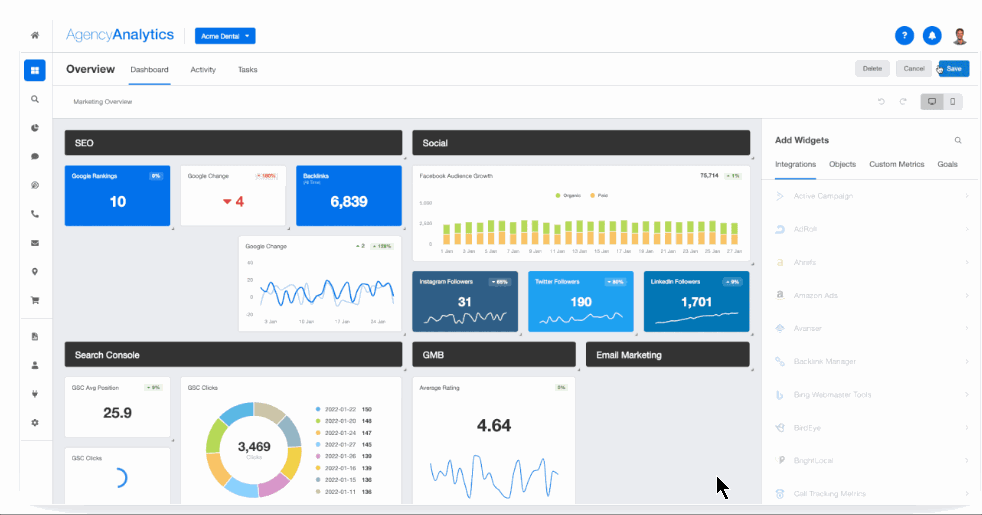
Streamline your agency's operations and collaborate with your team seamlessly by using a customizable dashboard from AgencyAnalytics–try it free for 14 days.
The Downside of the Pod Model
The primary drawback of the pod model is the difficulty of scaling. For example, if you’re onboarding new clients without adding support (like a dedicated pod), you’re diluting your project leads’ ability to deliver top results for clients. In this particular case, clients won’t receive the same level of attention as before, which could lead to dissatisfaction.
With specialized teams, if a team loses a few members at once–as it's common for art director/copywriter teams to travel in pairs and leave/join ad agencies together–it's harder for others to dive in and help out because they're unfamiliar with the account.
To offset this possible challenge, think about your agency’s growth goals and whether you’ll plan to hire more staff to meet those needs. To keep up with these demands and ensure you’re delivering the best service, optimize as much as possible (like putting more focus on hiring new staff when needed).
Remember that this organizational structure requires a high level of trust and communication within each pod, and it can be more difficult to manage and coordinate multiple pods compared to a traditional structure. It's also important to ensure that each pod has access to the resources and support they need to serve their clients effectively.
Other Organizational Structures to Consider
While the traditional and pod models are the most popular, the following organizational structures allow for an even more flexible approach are worth noting.
3. The Matrix Structure
This organic structure combines elements of both the traditional hierarchical structure and the pod-based structure. In a matrix model, employees have dual reporting relationships–typically with both a functional manager and a project or client manager. For example, a graphic designer might report to the head of the design department (functional manager), and also to the project manager of a specific client project they're working on.
The matrix model allows for the deep functional expertise provided by the traditional structure, as employees belong to specific departments. Simultaneously, it facilitates the agility and client focus of the pod model, as cross-functional teams can be formed to work on specific projects or accounts.
This hybrid approach is designed for agencies with multiple projects going on at once, fostering collaboration and flexibility. It’s an attractive option for agencies that handle diverse projects and require a high degree of cross-functional teamwork.
Pros and Cons of the Matrix Organizational Structure
In the matrix structure, everyone wears different hats and comfortably switches roles and teams.
The matrix structure is excellent at creating conditions for collaboration across an organization, allowing individual team members to take into account disparate goals from a couple of different departments.
The agency theory behind the matrix model (if we were to lean on sociological theory here) involves a set of interconnected perspectives that flow between employees. These mixed social interactions breed unique perspectives and can lead teams to come up with some pretty innovative ideas.
That being said, it’s not without its faults.
Pros | Cons |
|---|---|
Enhanced Collaboration: Fosters collaboration, leading to more innovative solutions and a more holistic approach to client work. | Complex Management: Dual reporting relationships can make it more complex to manage. |
Increased Flexibility: Allows for the formation of teams based on the needs of specific projects or clients. | Potential for Role Confusion: With employees reporting to multiple managers, it can sometimes be unclear who is responsible for what, which can lead to confusion. |
Adaptability: Easily adaptable to changing client needs or market conditions. | Risk of Power Struggles: The dual authority structure can sometimes lead to power struggles or conflicts between managers. |
Resource Optimization: Enhanced efficiency, ensuring that the right people are working on the right projects at the right time. | Increased Communication Overhead: Requires strong and frequent communication to coordinate efforts and keep everyone aligned, which can be time-consuming. |
Employee Development: Employees can gain diverse experiences and learning opportunities by working on different teams and projects. | Potential for Employee Stress: Employees may feel pulled in different directions by their multiple managers, which can lead to stress or burnout. |
Balanced Focus: Focuses on achieving business objectives while satisfying client needs. | Requires Strong Leadership: Clear communication, distinct roles and responsibilities, and strong leadership are essential for the matrix model to work. |
4. The Flat Model
The flat model, also known as a horizontal structure, is a non-hierarchical approach to organizing a marketing agency. In a flat structure, there are few or no levels of middle management between staff and executives. This model is characterized by its emphasis on employee autonomy and direct communication without any hierarchy.
People may argue that a flat structure is best, but I have found that there is still always a 'hidden' chain of command existing in flat structures too.
Jonathan Gorham, Founder of Engine Scout
In a flat marketing agency, the lines between managers and staff are blurred. Instead of a top-down approach, decisions are often made collectively, with input from a variety of people within your organization. This leads to a more democratic and inclusive work environment, where everyone's ideas and contributions are valued.
Pros and Cons of the Flat Organizational Structure
Before choosing this type of organization, consider the Italian saying, “Clear agreements, long-lasting friendship.” When you break down the barriers in the hierarchy, a lot gets left to the spontaneity of human behavior, so you need to ensure that each individual action adds up to the overall business goals.
Pros | Cons |
|---|---|
Increased Collaboration: Fewer levels of hierarchy lead to more collaboration and innovation. | Requires High Trust: A high level of trust in employees is necessary as they are given a great deal of autonomy. |
Faster Decision Making: Decisions can often be made more quickly without the need for approval from multiple levels of management. | Needs Strong Communication and Conflict Resolution Skills: Decisions are often made collectively, requiring effective communication and conflict resolution. |
Greater Employee Autonomy: Employees have more control over their work and more freedom to make decisions, leading to increased job satisfaction and motivation. | Potential for Role Confusion: Without a clear hierarchy, it can sometimes be unclear who is responsible for what, which can lead to confusion or lack of accountability. |
Wider Communication: With fewer levels of hierarchy, team members are free to communicate and collaborate with people from across the organization. | Risk of Decision-Making Paralysis: If consensus is required for decisions, it can sometimes lead to delays or indecision. |
Less Bureaucracy: A flat structure can reduce bureaucracy and red tape, making the marketing agency more agile and responsive. | Scaling Challenges: As the organization grows, maintaining a flat structure can become more difficult and may require additional layers of management. |
While it’s fine to have a flat organizational structure and is sometimes necessary with smaller agencies, you may reach a point where there's confusion and mini-power struggles. And if there’s no clear boss to report to, you run the risk of people not being held accountable for their work (and especially the quality of that work).
Amit Raj, SEO Consultant at Amit Digital Marketing
5. The Freelance/Collective Organizational Structure
In this organizational structure, the marketing agency is primarily composed of freelancers or independent contractors who are brought together for specific projects. This structure is becoming increasingly popular in the creative industry, as it offers a high degree of flexibility and scalability.
In a freelance or collective agency, there is typically a core team or individual who manages client relationships and coordinates projects. When a new project comes in, they assemble a team of freelancers with the specific skills and expertise needed for that project. These freelancers might be writers, designers, strategists, developers, or any other role needed.
Once the project is completed, the team disbands, and the freelancers move on to other projects, either with the same marketing agency or elsewhere. The next time a project comes in, a new team is assembled, which might include some of the same freelancers or entirely new ones.
Pros and Cons of the Freelance/Collective Organizational Structure
Having a team that has this level of modular flexibility has its perks. For one, it’s a purely functional structure that assembles itself and disassembles like a transformer. But the downsides of this social structure present some unique challenges.
Pros | Cons |
|---|---|
Flexibility: The marketing agency can easily adapt to the needs of each project, bringing in different skills and expertise as needed. | Depends on Strong Project Management: Managing a constantly changing team of freelancers requires q project manager mindset and coordination skills. |
Scalability: The marketing agency can easily scale up or down depending on the volume of work. | Requires a Reliable Freelancer Network: The marketing agency needs a strong network of reliable freelancers who can deliver high-quality work on time. |
Cost Efficiency: The marketing agency avoids the fixed costs of full-time employees, as freelancers are typically paid per project or per hour. | Potential Lack of Commitment: Freelancers may not have the same level of commitment or understanding of the agency's culture and processes as full-time employees. |
Access to a Wide Talent Pool: The marketing agency can work with freelancers from anywhere, allowing them to find the best person for each role, regardless of location. | Inconsistent Quality: The quality of work can vary between freelancers, and it can take time and effort to find and vet high-quality specialists. |
What if You’re Running a Virtual or Remote Marketing Agency?
Virtual offices and agencies have become increasingly popular in recent years, driven by advances in digital technology and a growing recognition of the benefits of remote work for promoting work-life success.
Remote agencies have employees working from different locations. Some might work from home, in co-working spaces, or even from different cities or countries rather than in a central office.
Thus, they communicate and collaborate using digital tools such as email, video conferencing, project management software, and cloud-based file sharing. Choosing a functional organizational structure that best suits your agency’s setup will require considerations such as facilitating effective communication (which can be seen in the pod model) and instilling a strong culture of trust and accountability while also managing different time zones (like in the freelance or collective organizational structure).
Whichever you choose, realist social theory would posit that an agency running virtually is just as good as an in-office setup–it’s a natural response to changing social, technological, and economic conditions.
Read more essential tips for managing a remote marketing team.
Recently, we found that a content marketing strategy for a large client with multiple locations and services was ballooning–it was too fragmented, too caught up in small details, and essentially got lost in what we and the client actually wanted to achieve. Using a combination of online meetings and Miro boards, we were able to refocus it together while working remotely, resulting in a sleek, actionable, and highly effective content marketing strategy that precisely aligned with the clients goals and ours.
Michelle van Blerck, Communications Manager, Digital Freak
Should You Separate Account Management and Execution?
To have a functional organizational structure, one important decision you will have to make is whether you separate account management and execution in your marketing agency org chart.
It seems every marketing agency has a different opinion–some are all-in on splitting the responsibilities, while others prefer to combine them.
Let's explore diverse perspectives on this matter from various marketing agency owners.
‘All Hands On Deck’ Works Better for Smaller Agencies
It’s often necessary in smaller agencies for specialists to interact directly with clients. While this can create strong relationships and lively conversations about projects, the additional workload sometimes leads to employee burnout.
I think it’s an ideal customer experience to have a specialist handling all of the work and an account executive communicating the progress to the client. However, in a smaller marketing agency, everyone has to be “all hands in” when it comes to client service.
Jeff Romero, Co-Founder of Octiv Digital
May Reduce Unnecessary Steps
Grouping the responsibilities into one role to streamline operations by removing potential bottlenecks.
I've found it is much more effective to combine account management and fulfillment. In my experience, it's better to not have a middleman who is just an account manager because when the client has specific questions, they are often not able to answer them. Having an account manager and a different person to fulfill specific tasks just adds an unnecessary step in the communication chain.
Stacy Caprio, Founder of Accelerated Growth Marketing
Keeps a Buffer Between the Client and Specialist
Creating buffers between the client and the specialist is especially helpful when dodging unreasonable client requests.
It’s helpful to have the account management team in place because it gives a buffer between our specialists and the client—allowing our specialists to perform the work needed to move the needle on their sites and marketing efforts without having to be in constant contact with the client all the time.
Chris Weatherly, Director of Sales & Operations for WRAL Digital Solutions
Risks Miscommunication
With a separation of account management from execution, the potential for miscommunication may increase.
I think there should be one person who "handles the account" and does the actual work on their website. I worked in a few agencies, and often there is an information discrepancy between an account manager and a search engine optimization or PPC person who is working on the account. Also from a client perspective, it is better for them to have direct contact with their digital marketing person.
Filip Silobod, Founder of Honest Marketing
As you can see, there are distinct pros and cons to separating account management and execution. Factor in all these considerations when deciding on your organizational structures.
Pick the Organizational Structure That Works for Your Marketing Agency
Picking the right org structure is no easy feat. Every marketing agency is built differently, and you’ll need to choose the one that’s right for your services and stage of growth.

Regardless of what organizational structure works for you, you need solid processes in place to simplify, streamline, and succeed. Scaling your marketing agency with no set system to track trends or understand the data will impede strategic decision-making and slow your growth.
In any collaborative environment where you’re combining responsibilities or assigning clients to multiple internal teams, you need added support and functionality. That’s where a client reporting tool like AgencyAnalytics comes in.
Built specifically for marketing agencies, AgencyAnalytics has all the capabilities you need to manage your entire agency, offering unlimited client and staff access with customized permissions.
From creating white-labeled reports to real-time data access, this powerful tool:
Facilitates client communication through built-in messaging
Streamlines workflows and consolidates marketing efforts through customizable dashboards
Clearly communicates success to clients with features like individual logins and an annotations and goals feature
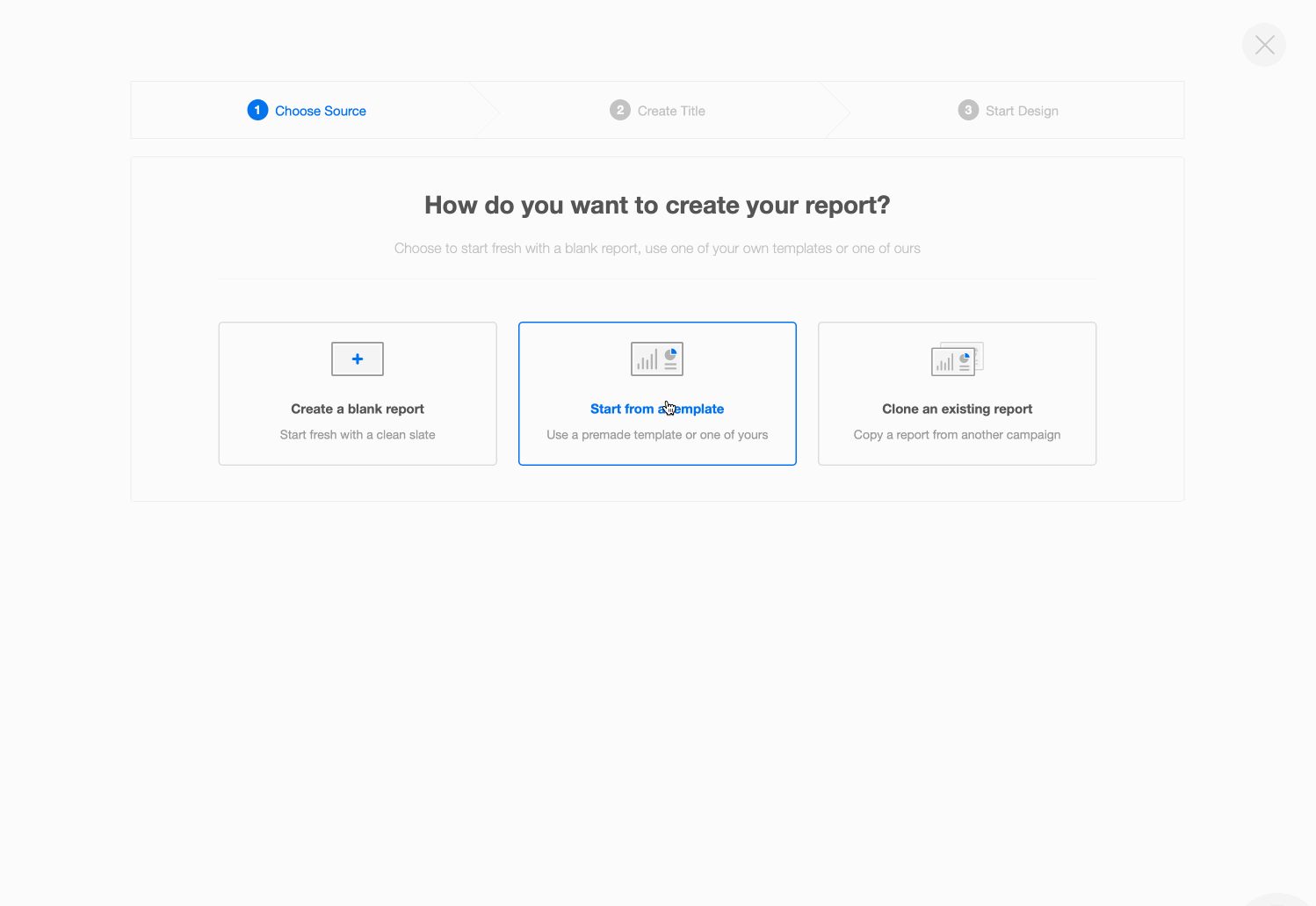
With over 80 integrations and a host of management features, build custom client reports in minutes. Start your free 14-day AgencyAnalytics trial and see why over 7,000 agencies rely on it.
The only regret we have about switching to AgencyAnalytics is not doing it sooner. It has saved us an incredible amount of time and makes us look polished and professional.
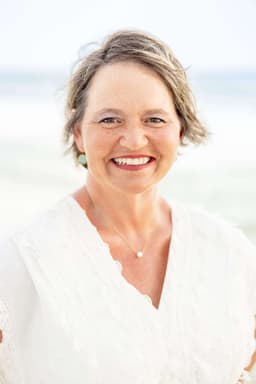
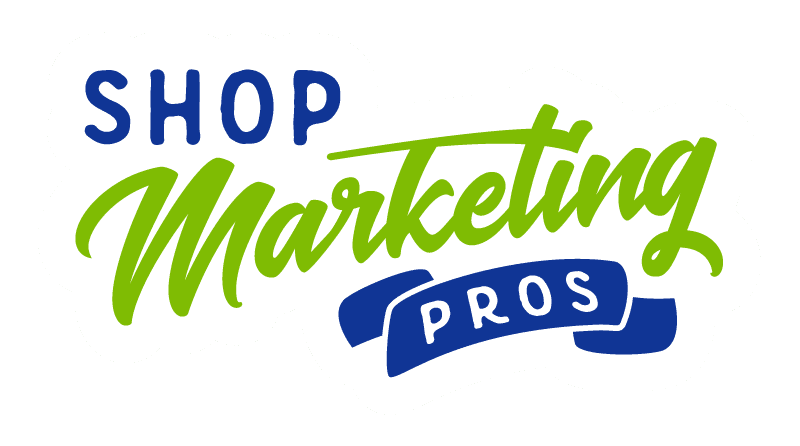

Written by
Melody Sinclair-Brooks brings nearly a decade of experience in marketing in the tech industry. Specializing in B2B messaging for startups and SaaS, she crafts campaigns that cut through the noise, leveraging customer insights and multichannel strategies for tangible growth.
Read more posts by Melody Sinclair-BrooksSee how 7,000+ marketing agencies help clients win
Free 14-day trial. No credit card required.



![What is the Ideal Agency Structure? [Traditional vs. Pod Hierarchy] What is the Ideal Agency Structure? [Traditional vs. Pod Hierarchy]](/_next/image?url=https%3A%2F%2Fimages.ctfassets.net%2Fdfcvkz6j859j%2F2kbsPgQU9lNcDbmDyQUAId%2F50627cff0bcd570713198bf15bea9db7%2FIdeal-Marketing-Agency-Structure-Traditional-Pod-Hierarchy.png&w=1080&q=75)


